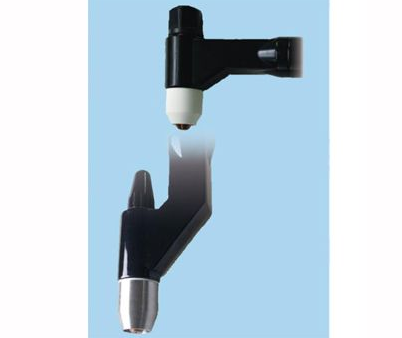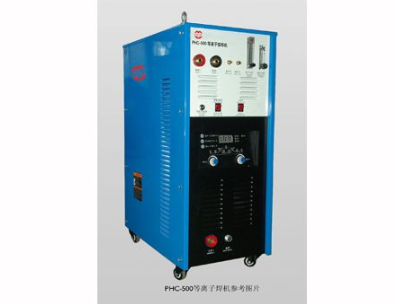Plasma welding is an electric arc welding process that uses a plasma torch to join metals. The principle of this method is derived from GTAW aka TIG welding, in which an electric arc is created between the electrode and the workpiece.
Let's take a deeper look at what plasma welding really is.
Plasma arc welding (PAW) is an arc welding process that is very similar to TIG welding in that the arc is formed between a pointed tungsten electrode and the workpiece. However, by placing the electrode inside the torch body, the plasma arc can be separated from the shielding gas housing. The plasma is then forced through a fine-bore copper nozzle that constricts the arc.
Three modes of operation can be generated by varying the orifice diameter and plasma gas flow -

Plasma Arc Welding Torch
Micro plasma welding (0.1 - 15A)
Micro plasma is used to weld thin plates (down to 0.1 mm thick) as well as wire and mesh sections. The needle-like, stiff arc minimizes arc drift and distortion.
Medium current welding (15 - 200A)
When used in melt mode, this is an alternative to conventional TIG. Advantages include deeper penetration (from a higher plasma gas stream), higher tolerance to surface contamination including coatings (electrode located in the torch body) and better tolerance to changes in electrode to workpiece distance without significant changes in heat input.
Keyhole welding (above 100A)
By increasing the welding current and the plasma airflow, a very powerful plasma beam is generated, which allows complete penetration in the material, as in laser or electron beam welding. During the welding process, a small hole is formed which gradually cuts through the metal and the molten pool flows backwards, forming a weld under surface tension. The process can be used for single-pass welding of thicker materials (up to 10 mm stainless steel).

Plasma Arc Welding Machine
The plasma arc is typically operated using a DC, constant current (falling) characteristic power source. Because of its unique operating characteristics derived from a special torch arrangement and separate plasma and shield gas streams, a plasma console can be added to a conventional TIG power source. Specially built plasma systems are also available.
Although the arc is initiated using HF, it is first formed between the electrode and the plasma nozzle. This "guided" arc remains within the body of the torch until a weld is required, and is then transferred to the workpiece. The guided arc system ensures reliable arc initiation and, by maintaining the guided arc between the welds, it avoids the need for HF reignition, which can cause electrical interference.
The electrode used for the plasma process is tungsten-2% thorium oxide and the plasma nozzle is copper. The plasma nozzle orifice size is critical, too small for the current level and plasma gas flow rate can lead to excessive nozzle corrosion or even melting.
The normal gas combination is argon for the plasma gas and argon or argon plus 2% to 5% hydrogen for the protective gas. Helium can be used as a plasma gas, but because it is hotter, it will reduce the current rating of the nozzle. The lower quality of helium can also make hole lock patterns more difficult. Helium-argon mixtures are used as protective gases for materials such as copper.







